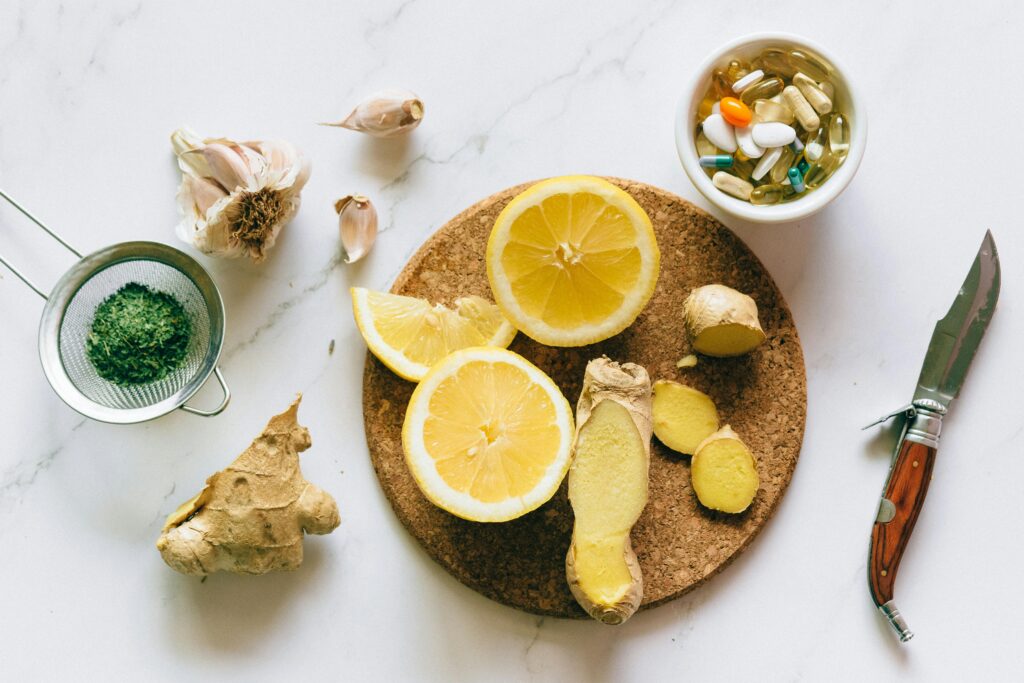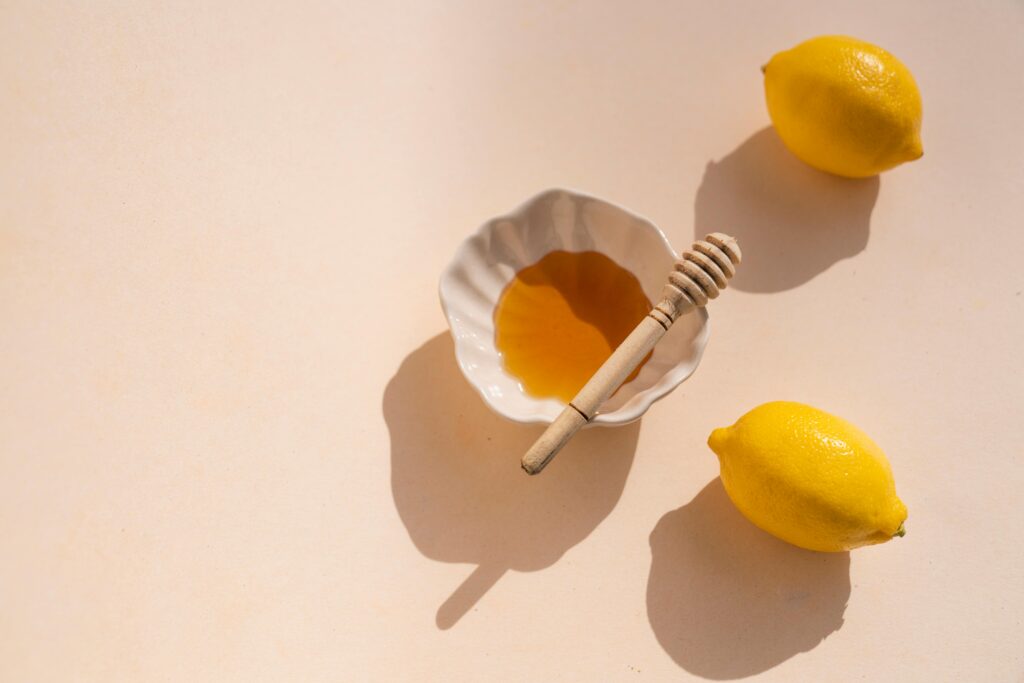Most Folks Have No Clue. 12 Natural Painkillers That Are Found In Your Kitchen
Last updated on
What if the answer to your aching joints, throbbing headaches, or sore muscles wasn’t tucked inside a pill bottle, but waiting quietly in your pantry? For centuries, long before ibuprofen and acetaminophen lined pharmacy shelves, people turned to spices, fruits, and herbs for comfort. Now, science is catching up to what traditional healers already knew: compounds in everyday foods can ease pain, calm inflammation, and even rival modern medications.
Consider this: researchers have found that turmeric’s active ingredient, curcumin, can perform as effectively as some anti-inflammatory drugs for arthritis without the same side effects. Ginger has been shown to reduce exercise-induced muscle pain by nearly a quarter, while peppermint oil applied to the temples can relieve a tension headache as quickly as standard pain gels. These aren’t exotic remedies you have to track down in specialty shops, they’re ingredients most of us already use to flavor dinner or sweeten tea.
Pain is universal, but the way we manage it doesn’t always have to rely on pharmaceuticals. Your kitchen may be stocked with quiet allies that soothe, strengthen, and restore balance in the body. From fiery chili peppers that trick your brain into releasing endorphins to honey that coats a raw throat better than cough syrup, natural painkillers are closer than you think.
The Science of Natural Pain Relief
Pain may feel like an inconvenience, but it’s actually the body’s built-in alarm system. Nerves detect injury or irritation, send signals up the spinal cord, and the brain interprets them as pain. This process is crucial for survival, but when pain lingers long after an injury heals, or when inflammation keeps signaling the body unnecessarily, it becomes a burden rather than a warning.
This is where natural pain relief enters the conversation. Many foods and herbs work on the same biological pathways targeted by conventional drugs, but in subtler, sometimes gentler ways. For example, compounds in turmeric and olive oil act on enzymes that promote inflammation the same ones affected by NSAIDs like ibuprofen. Chili peppers contain capsaicin, which blocks “substance P,” a neurotransmitter that delivers pain messages to the brain. Peppermint’s menthol cools and relaxes muscles while improving circulation, easing the tension behind headaches.

Experts caution, though, that “natural” isn’t synonymous with “effective.” Dr. Robert Saper, a preventive medicine specialist, puts it plainly: remedies should be judged by whether they’re “evidence-based, nondrug, or nonpharmacologic treatments.” This distinction matters because while some kitchen staples now have robust clinical support, others are still better categorized as folk traditions.
Still, the appeal of food-based remedies lies in their ability to address root causes like chronic inflammation, not just mask symptoms. Inflammation, often described as the body’s “slow burn,” is linked not only to arthritis and joint pain but also to cardiovascular disease and diabetes. By lowering inflammation through diet whether with omega-3-rich salmon, antioxidant-packed blueberries, or anti-inflammatory spices like turmeric people aren’t just easing discomfort; they’re supporting long-term health.
12 Natural Painkillers in Your Kitchen Pantry
Your kitchen is more than a place to cook it can double as a medicine cabinet. Here are 12 everyday foods and spices with scientifically supported pain-relieving properties.
1. Turmeric: The Anti-Inflammatory Powerhouse Turmeric’s golden pigment comes from curcumin, a compound known for fighting inflammation at the cellular level. A review in the Journal of Medicinal Food found curcumin to be as effective as some nonsteroidal anti-inflammatory drugs (NSAIDs) in easing arthritis pain, without the same stomach-irritating side effects. The catch: curcumin is poorly absorbed unless paired with black pepper, which boosts its bioavailability by up to 2000 percent. Stir turmeric into soups, blend it into smoothies, or try “golden milk” with a pinch of pepper for a warming daily tonic.
2. Ginger: Comfort for Cramps and Muscles Used for centuries in traditional medicine, ginger’s active compounds gingerols and shogaols reduce inflammation and improve circulation. A study in The Journal of Pain found that daily ginger consumption reduced exercise-induced muscle soreness by 25 percent. Another trial linked ginger tea with reduced menstrual cramp intensity. Fresh ginger slices steeped in hot water make a soothing tea, while powdered ginger can be added to curries, stir-fries, or baked goods.

3. Garlic: Fighting Pain Through Immune Support Garlic’s allicin compounds suppress enzymes that fuel inflammation while boosting circulation. Research published in Food and Chemical Toxicology highlights its ability to modulate inflammatory pathways, making it useful for arthritis-related discomfort. For maximum effect, crush or chop fresh garlic and let it sit before eating this activates allicin. Use it raw in dressings or lightly cooked in sauces and roasted dishes.
4. Cloves: Nature’s Numbing Agent Cloves contain eugenol, a natural anesthetic still used in some dental treatments. A study in the Journal of Dentistry showed clove oil worked as effectively as benzocaine gel in dulling gum pain. For relief, diluted clove oil can be dabbed on sore gums, or a whole clove can be gently chewed to release its numbing oils.
5. Peppermint: Cooling Relief for Headaches Peppermint’s menthol relaxes muscles and widens blood vessels, relieving the tightness behind tension headaches. A clinical study in Frontiers in Neurology found that peppermint oil applied to the temples significantly reduced headache intensity within 15 minutes. Peppermint tea can calm digestive discomfort, while diluted peppermint oil massaged on temples or the back of the neck works well for direct relief.

6. Cinnamon: Sweet Relief for Inflammation Beyond its cozy flavor, cinnamon contains cinnamaldehyde and procyanidins, compounds that lower oxidative stress and inflammation. Research in the Journal of the American College of Nutrition showed cinnamon supplementation reduced inflammatory markers in people with metabolic conditions. Sprinkle it into coffee, oatmeal, or yogurt for daily support. For long-term use, Ceylon cinnamon is safer than cassia, which contains higher coumarin levels that can affect the liver.
7. Apple Cider Vinegar: Soothing Digestive Discomfort Apple cider vinegar (ACV) has been a folk remedy for centuries, but modern research suggests its acetic acid may help balance stomach acidity, easing bloating and indigestion. Its antimicrobial action can also soothe throat irritation. Always dilute ACV a teaspoon or two in a glass of water to avoid damaging tooth enamel or irritating the stomach.
8. Honey: A Natural Soother Honey coats the throat and reduces irritation, making it a time-tested remedy for coughs and sore throats. A Pediatrics study even found honey more effective than cough syrup at calming nighttime cough in children. Medical-grade honeys, like Manuka, are also used in wound care to speed healing and reduce pain. A spoonful in tea or warm water can provide relief while supporting the immune system.

9. Cayenne Pepper: Heat That Blocks Pain The capsaicin in cayenne peppers reduces pain by depleting substance P, the chemical that carries pain signals to the brain. A Cochrane review found topical capsaicin effective against chronic nerve pain and osteoarthritis. In cooking, cayenne pepper adds gentle exposure, but for stronger relief, capsaicin creams are widely available.
10. Olive Oil: Liquid Gold Against Inflammation Extra virgin olive oil (EVOO) contains oleocanthal, which works much like ibuprofen in reducing inflammatory enzymes. Diets rich in olive oil such as the Mediterranean diet are consistently linked with reduced arthritis symptoms and better joint health. Drizzle EVOO over vegetables, salads, or whole grains to benefit from its protective compounds.
11. Chamomile: Stress-Linked Pain Relief Chamomile’s apigenin flavonoid has both anti-inflammatory and calming effects, making it ideal for stress-related pain or menstrual cramps. Studies in Phytomedicine found chamomile extracts reduced anxiety and improved sleep, both of which influence pain perception. A warm cup of chamomile tea before bed helps relax muscles and promote restful sleep.
12. Lemons: Vitamin C for Joint Support Lemons pack vitamin C, essential for collagen production that keeps joints, cartilage, and connective tissue healthy. Research in Arthritis & Rheumatism linked low vitamin C intake to a higher risk of inflammatory arthritis. Adding lemon juice to water or meals provides an easy daily boost that supports tissue repair and inflammation control.
Lifestyle and Mind-Body Approaches

While your pantry offers powerful allies against pain, relief doesn’t stop at the dinner table. The body’s pain pathways are influenced not only by what we eat, but also by how we move, rest, and think. Simple, evidence-based lifestyle and mind-body approaches can work hand-in-hand with natural foods to create more lasting comfort.
Heat and Cold Therapy Alternating heat and ice is one of the oldest and most reliable home remedies. Ice helps calm swelling and numb sharp pain after injuries, while heat loosens stiff muscles and improves circulation. For chronic arthritis, moist heat like a warm bath often works better than cold compresses. Limiting each session to 20 minutes helps avoid burns or frostbite.
Movement and Stretching Pain can make rest feel like the safest option, but too much stillness often worsens stiffness. Light exercise boosts circulation, strengthens muscles, and triggers the release of endorphins the body’s natural painkillers. Even gentle activities such as walking, yoga, or chair stretches can make a difference. For muscle or joint pain, gradual stretching helps restore mobility without straining tissues further.
Breathwork and Relaxation When pain triggers the body’s “fight-or-flight” stress response, tension can amplify discomfort. Deep breathing retrains the nervous system to shift into “rest-and-digest” mode. Techniques like diaphragmatic breathing (slow belly breaths) or box breathing (inhaling, holding, exhaling, and holding in equal counts) calm the mind, reduce muscle tension, and restore balance.
Guided Imagery and Meditation The brain plays a central role in how pain is perceived. Practices like guided imagery mentally placing yourself in a calm, vivid environment or mindfulness meditation help redirect attention and reduce the brain’s fixation on discomfort. Clinical studies show these techniques can lower perceived pain intensity and improve overall quality of life in people with chronic pain.
Integrative Therapies Many evidence-backed practices bridge the gap between tradition and modern medicine. Acupuncture has been shown to ease chronic back pain and headaches by stimulating nerve pathways and boosting serotonin. Massage therapy not only reduces muscle tension but also lowers stress hormones, which can worsen pain. Yoga therapy and chiropractic care provide additional tools for addressing both physical alignment and mental well-being.
When to Seek Medical Care
Doctors often remind patients that untreated pain can shift from being a short-term warning to becoming a long-term condition. Acute pain, like a sprained ankle or a pulled muscle, usually fades with rest and care. Chronic pain, on the other hand, lasts three months or longer and may be tied to deeper issues such as arthritis, nerve damage, or autoimmune disorders. Left unaddressed, chronic pain can even rewire how the nervous system processes signals, making it harder to control over time.
It’s important to see a healthcare professional if you experience:
-
- Pain that is severe, sudden, or unexplained.
-
- Pain that doesn’t improve with rest or worsens over time.
-
- Pain accompanied by fever, swelling, unexplained weight loss, or numbness.
-
- Chronic pain lasting more than three months.
Medical specialists can help uncover the root cause and create a plan that may include both conventional treatments and natural approaches. In fact, many doctors today embrace integrative medicine combining evidence-backed natural remedies with physical therapy, medication, or targeted treatments for best results.
The key is balance. Turmeric or ginger may soothe inflammation, peppermint oil may calm a headache, and guided breathing may ease muscle tension but these should complement, not replace, professional evaluation when pain is persistent or mysterious. Pain is your body’s way of asking for care. Listening closely, and knowing when to seek expert help, ensures that natural remedies remain safe, supportive partners in your overall health.
Your Pantry, Your First Aid Kit
Beyond meals, your kitchen holds ingredients that ease pain, reduce inflammation, and promote recovery. From the soothing bite of ginger to the golden glow of turmeric, these simple foods prove that pain relief doesn’t always come in a bottle. Just as importantly, pairing these remedies with mindful practices like stretching, meditation, and better sleep creates a holistic approach that works with the body instead of against it.
No single ingredient will erase all discomfort, but small, consistent choices build resilience over time. Swapping butter for olive oil, adding cinnamon to morning coffee, or winding down with chamomile tea are subtle changes that add up. They not only help reduce pain but also strengthen the body against future flare-ups.
The next time pain knocks at your door, don’t just look to the pharmacy. Open your pantry, steep a tea, or season your meal with purpose. In doing so, you’re not just treating discomfort you’re reclaiming a more balanced, sustainable way of living.
Some of the links I post on this site are affiliate links. If you go through them to make a purchase, I will earn a small commission (at no additional cost to you). However, note that I’m recommending these products because of their quality and that I have good experience using them, not because of the commission to be made.

































 JOIN OVER
JOIN OVER
Comments